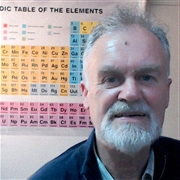Tutor HuntResources Chemistry Resources
History And Structure Of Atoms
The key people involved in the history of atoms.
Date : 07/09/2023
The Idea of the Atom: Way back, around 400 B.C., this smart Greek chap named Democritus coined the term "atomos", meaning "indivisible". He thought matter was made of these tiny particles that you just couldn`t split any further. But, back then, it was more philosophy than science.John Dalton`s Billiard Ball Model (1803): Fast forward to the 1800s, and along comes Dalton. This English lad proposed the theory that elements consisted of atoms that had specific masses. He pictured the atom like a solid billiard ball – just a solid sphere.J.J. Thomson`s Plum Pudding Model (1897): Enter Thomson! He discovered the electron and was like, "Hey, atoms aren’t just neutral balls. They`ve got negatively charged bits (electrons) in them!" He imagined the atom like a plum pudding or Christmas pud – a positively charged sphere with negative electrons dotted inside.Rutherford`s Nuclear Model (1911): Rutherford, a New Zealand-British scientist, did this gold foil experiment which was mind-blowing. He found out atoms aren’t just solid blobs. They`ve got a tiny, dense, positive core called the nucleus, with electrons buzzing around it. It’s mostly empty space!Bohr`s Planetary Model (1913): A few years later, Bohr, a Danish physicist, added a twist. He said electrons move in specific orbits around the nucleus, kind of like planets around the sun. Each orbit had a fixed energy level.Quantum Mechanical Model (20th Century): Then, the world of quantum physics came to the party. Scientists like Schrödinger and Heisenberg introduced the idea that we can`t pin down an electron’s exact location. Instead, they gave us these electron "clouds" or "probability areas" where an electron might be.
This resource was uploaded by: Frank

